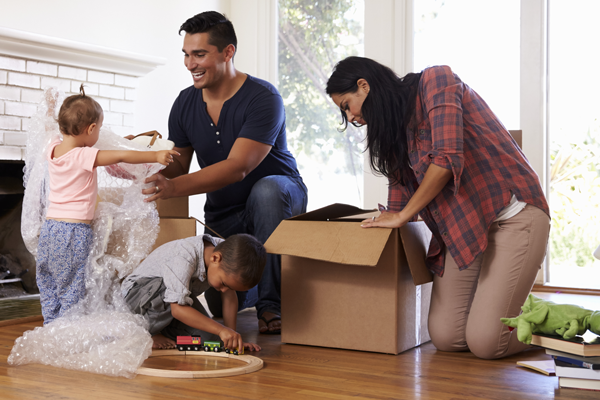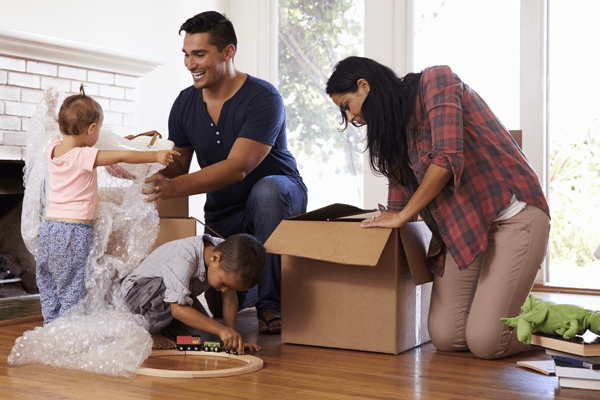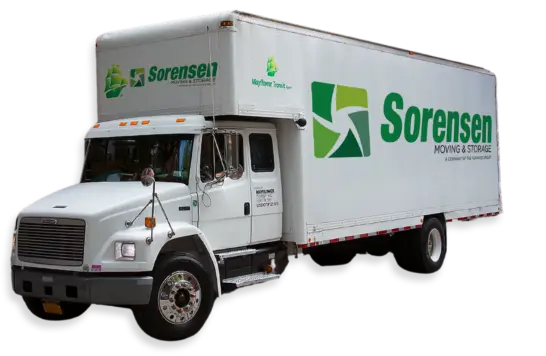

5 & Under:
This age group isn’t quite old enough to understand what is going on and their reaction could be positive or negative. Some might see it as a fun, new place to explore and learn while others will be miss the security and comforts of a more familiar space. It can be a challenge to comfort them verbally. Familiar, physical items will be a visual and tactile suggestion that they are still safe and “at home.” Instead of starting completely anew with furniture and fixtures, it might be wise to keep a few key pieces of furniture that they normally interact with. For example, their bed, small table and chairs, or even an area rug they played on daily at the old home. It is recommended to have a box with favorite things and familiar objects readily accessible to be the first thing you unpack after a move. It is also recommended to stick to their normal routine as much as possible during and after the move even though it may be a slight inconvenience. Observing unusual behavior from family members, plus all the shuffling and changes in scenery can really disrupt your little one’s routine. It’s arguably better to take a little more time and stick to a schedule, then to push and later deal with an inconsolable and cranky toddler.
Young Children & Preteens:
At this age your children are old enough to understand a big change is happening. They’ll most likely show, or tell you, they are frightened of making new friends and leaving old friends behind. Parents have found that giving your child books about new adventures, or that include moving in the story, can be helpful for when they tend to withdraw. As it gets closer to moving day, enlist in their help packing up their belongings and to make a special box they want to unpack first in the new house.
Make some time to have brief talks with your child about new possibilities for them in the new town. Sit down and plan enrollment with them for a new school, after school activities, clubs, and sports. Answer questions the best you can about what their transition might be like. Finally, make sure to talk about what you will do to help them stay in touch with their old friends. If appropriate, discuss using social channels such as Facebook, Face Time, Skype and other video chats apps as a means to stay in touch.
Teenagers:
The struggle of settling into a new social peer group can be even more awkward when you’re still figuring out who you are. With teenagers, fear associated with moving will, more often than not, lead to anger. Do your best not to become frustrated and argue with your teenager. Let their expressions happen (within reason), and be supportive by providing as much information as you can. Expect that your teen will need time and space to adjust to starting over. Be patient and be positive!
Most importantly, make it clear that their feelings and opinions are valued, and that you are doing the best you can to make it easier for them. While they may not have control over this situation, try to allow your teen to make some smaller decisions after the move that will make it a more positive experience. Also, explain that big decisions that involve moving such as college, living on their own, and career choices are on the horizon for them too.
Getting Your Children (and Yourself!) into the Community
It’s easy to get hung up on the negative changes that might come from moving somewhere new. Help everyone stay positive by trying out these tips:
-
Be a Tourist!
If you currently live close enough to where you will be moving, schedule a weekend to explore what will be your new home. Find a few restaurants you like, visit a museum, walk through “downtown,” learn where the gym/school/mall is, discover the community’s choice spots for outdoor recreation…let your family become familiar with a few main areas to ease the transition.
-
Get Your Network On
This one’s for you parents. Network remotely as much as possible before you move, because getting on Facebook and finding pages for workout groups or clubs that you can jump into will make YOUR transition easier. After the move don’t be shy- talk to neighbors, that woman in your spin class, your new coworkers, and anyone who’s amiable to answering questions or meeting you for coffee. If you have a good understanding of your new community, plus a growing social network that includes a few children, it will be easier to introduce your own kids to a new town and it’s people with confidence.
-
Host a Housewarming Party
If you feel like it might benefit you to get to know people in a controlled environment, invite everyone you’ve met so far to come over for a housewarming. Make it a potluck or fire up the grill, and turn a semi-empty room into a buffet line. This is also good opportunity to allow your children meet new friends on their own turf. Showing kids their new room, playing games, and getting to know one another on your child’s terms will give them the sense of confidence they need to feel safe and start settling in. Use this party to form connections and start a new support system.
Your kid(s) might be excited, might be afraid, or both. Handle mood swings and anger with levity; accept that moving might be a larger challenge for your child than you originally imagined. Do your best to give them lots of information, encourage questions and their participation in the moving process, and be proactive in involving them your new community. With time and patience, your new home will become just as comfortable as your last!
Happy Moving from the team at Sorensen Moving & Storage!
For more tips and information, contact us through the form on the right, or call us today!




